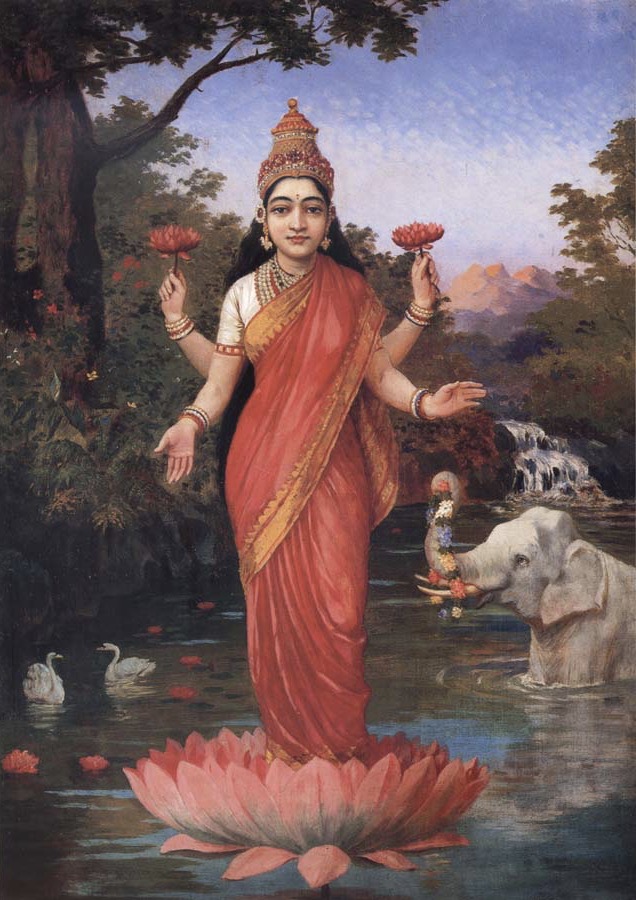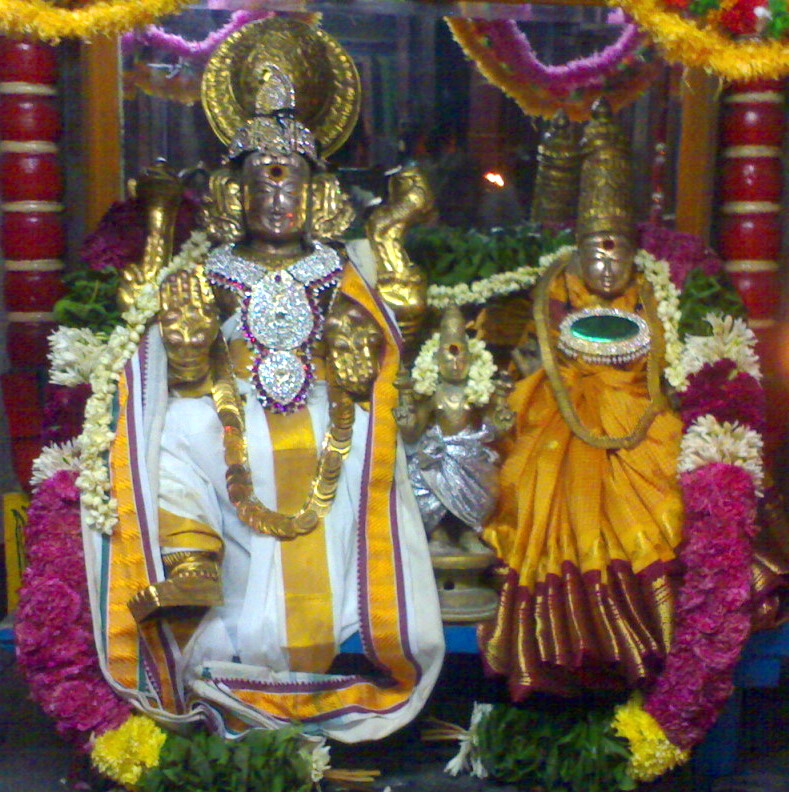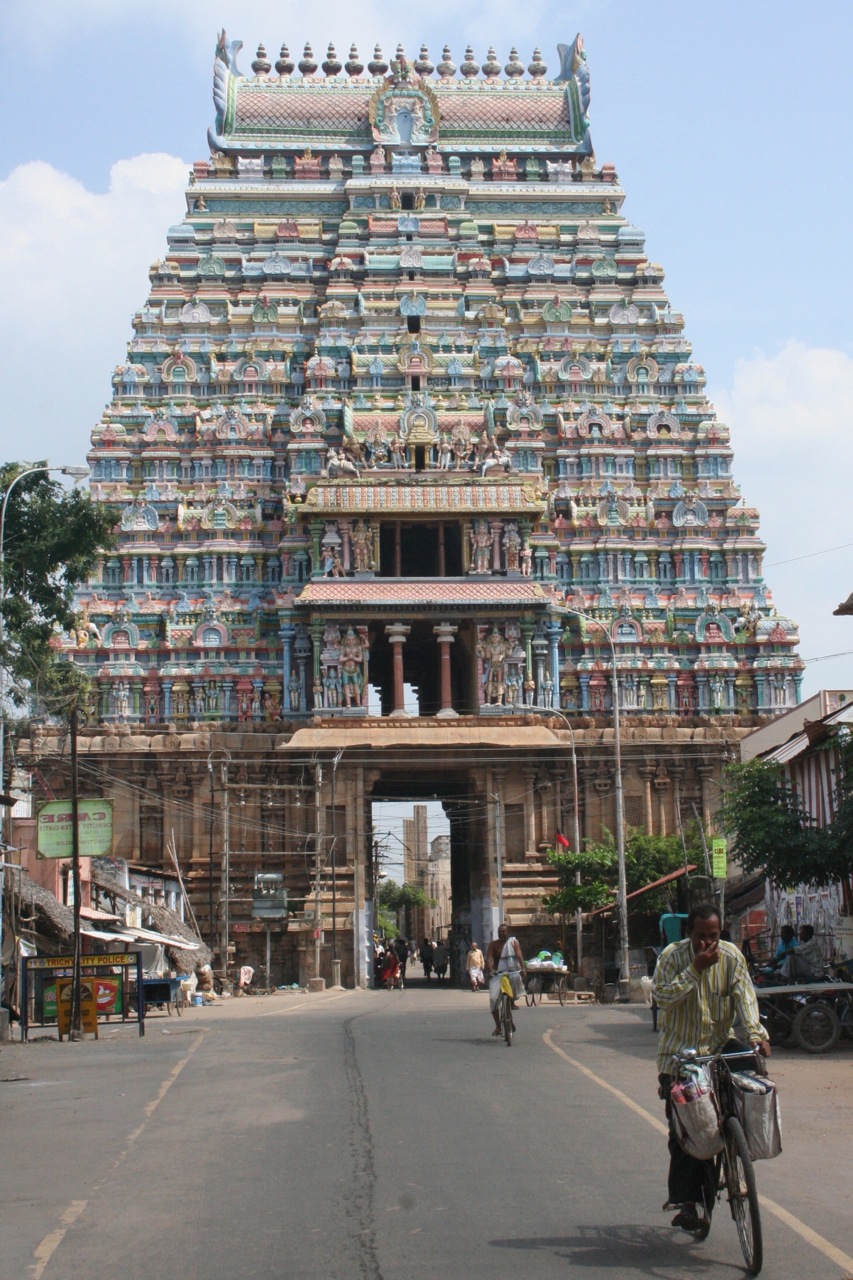|
Utsavar
In Hinduism, utsava murti,James Lochtefeld (2002), The Illustrated Encyclopedia of Hinduism: A-M, The Rosen Publishing Group, , page 726 utsavar or uthsavar, is a form of a ''murti'' (icon) which represents a deity. The portable utsavar is employed in the tradition of temple processions, serving as a substitute for the central idol present in the temple shrine, called the mulavar. Etymology The term ''utsava'' is broken down into two root words ''ut'' - "removal" and ''sava'' - "sorrows." Collectively known as "removal of worldly sorrows." The second term ''murti'' means "manifestation of divinity." ''Utsava murti'' is also translated as "festival image" or "idol used for procession." Images An utsava murti is generally made of metal, whereas a mulavar murti is usually made of stone. Ablutions are performed on the utsavar images during daily prayer, or during festivals. It is performed in a sequence with various material like milk, curd, honey, and sugar. These are meant ... [...More Info...] [...Related Items...] OR: [Wikipedia] [Google] [Baidu] |
Murti
In the Hinduism, Hindu tradition, a ''murti'' (, ) is a devotional image, such as a statue or icon, of a Hindu deities, deity or Hindu saints, saint used during ''Puja (Hinduism), puja'' and/or in other customary forms of actively expressing devotion or reverence – whether at Hindu temples or shrines. A ''mūrti'' is a symbolic icon representing divinity for the purpose of devotional activities. Thus, not all icons of gods and saints are ''mūrti''; for example, purely decorative depictions of divine figures often adorn Hindu temple architecture in intricately carved doorframes, on colourfully painted walls, and ornately sculpted rooftop domes. A ''mūrti'' itself is not God, but it is merely a representative shape, symbolic embodiment, or iconic manifestation of God. ''Murti'' are also found in some nontheistic Jainism, Jain traditions, where they serve as symbols of revered mortals inside Jain temples, and are worshiped in ''murtipujaka'' rituals. A ''murti'' is typically ... [...More Info...] [...Related Items...] OR: [Wikipedia] [Google] [Baidu] |
Shiva
Shiva (; , ), also known as Mahadeva (; , , Help:IPA/Sanskrit, [mɐɦaːd̪eːʋɐh]) and Hara, is one of the Hindu deities, principal deities of Hinduism. He is the God in Hinduism, Supreme Being in Shaivism, one of the major traditions within Hinduism. Shiva is known as ''The Destroyer'' within the Trimurti, the Hinduism, Hindu trinity which also includes Brahma and Vishnu. In the Shaivite tradition, Shiva is the Supreme Lord who creates, protects and transforms the universe. In the goddess-oriented Shaktism, Shakta tradition, the Supreme Goddess (Devi) is regarded as the energy and creative power (Shakti) and the equal complementary partner of Shiva. Shiva is one of the five equivalent deities in Panchayatana puja of the Smarta Tradition, Smarta tradition of Hinduism. Shiva has many aspects, benevolent as well as fearsome. In benevolent aspects, he is depicted as an Omniscience, omniscient yogi who lives an Asceticism#Hinduism, ascetic life on Kailasa as well as a house ... [...More Info...] [...Related Items...] OR: [Wikipedia] [Google] [Baidu] |
Hindu Iconography
Over the millennia of its development, Hinduism has adopted several iconography, iconic symbols, forming part of Hindu iconography, that are imbued with spiritual meaning based on either the Hindu scriptures, scriptures or cultural traditions. The exact significance accorded to any of the icons varies with region, period and denomination of the followers. Over time some of the symbols, for instance the Swastika has come to have wider association while others like Om are recognized as unique representations of Hinduism. Other aspects of Hindu iconography are covered by the terms murti, for icons and mudra for gestures and positions of the hands and body. Hindu sacraments Hindu sacraments are physical pieces of that help objects or markings that are considered sacred and used as a sign of devotion by the followers of Hinduism. These are often objects associated with a puja (Hinduism), puja (prayer) or religious ceremony. Murti Murtis (Sanskrit: मूर्ति) are sa ... [...More Info...] [...Related Items...] OR: [Wikipedia] [Google] [Baidu] |
Chidambaram
Chidambaram is a major town and municipality in Cuddalore district in the Indian state of Tamil Nadu, on the banks of the Vellar River where it meets the Bay of Bengal. It is the headquarters of the Chidambaram taluk. The town is believed to be of significant antiquity and has been ruled, at different times, by the Pallavas until ninth century, Medieval Cholas, Later Cholas, Later Pandyas, Vijayanagara Empire, Thanjavur Nayakas, Marathas and the British. The town is known for the Thillai Nataraja Temple and Thillai Kali Temple, and the annual chariot festival held in the months of December–January (In the Tamil month of Marghazhi known as "Margazhi Urchavam") and June to July (In the Tamil month of Aani known as "Aani Thirumanjanam"). One of the Divya Desams Divya Sri Govindaraja Perumal Temple (Thiruchitrakoodam) is a part of Thillai Nataraja Temple complex. Thiruvetkalam Shiva Temple, Vadakiruppu, Thirunelvayil Shiva Temple, Sivapuri and Tirukkazhippalai Palvannan ... [...More Info...] [...Related Items...] OR: [Wikipedia] [Google] [Baidu] |
Thiruvarur
Thiruvarur () also spelt as Tiruvarur is a municipality in the Indian States and territories of India, state of Tamil Nadu. It is the administrative headquarters of Thiruvarur district and Thiruvarur taluk. The temple chariot of the Thyagaraja temple, weighing and measuring tall is the largest temple chariot in India. Thiruvarur is the birthplace of Tyagaraja, Muthuswami Dikshitar and Syama Sastri, popularly known as the Trinity of Carnatic music of the 18th century CE. Thiruvarur Thiyagarajaa Swaamy temple is older than Tanjore big temple. Thiruvarur was a part of Thanjavur district until 1991. The Odambokki river passes through the centre of the town. Thiruvarur covers an area of and had a population of 58,301 as of 2011. Out of total population of Tiruvarur, 1,403,348 in the district, 257,795 are in urban area and 1,006,482 are in rural area. 65,220 households are in urban, 261,999 are in rural area. It is administered by a Local administration in Tamil Nadu#Urban Local Bod ... [...More Info...] [...Related Items...] OR: [Wikipedia] [Google] [Baidu] |
Sirkali
Sirkazhi (), also spelled as Sirkali and Siyali, is a selection grade municipal town in Mayiladuthurai district in Tamil Nadu, India. It is located from the coast of the Bay of Bengal, and from the state capital Chennai. Sirkazhi was a part of Thanjavur district until 1991 and has later been part of Nagapattinam district. The town covers an area of and in 2011 had a population of 34,927. It is administered by a second grade municipality. Sirkazhi is part of the Cauvery delta region and agriculture is the major occupation. Roads are the main means of transportation; the town has of district roads, including a national highway. The town is believed to be of significant antiquity and has been ruled by the Medieval Cholas, Later Cholas, Later Pandyas, the Vijayanagar Empire, the Marathas and the British. The Tamil trinity of Carnatic music; Arunachala Kavirayar (1711–78), Muthu Thandavar (1525–1600) and Marimutthu Pillai (1712–87), originated from Sirkazhi. The Saiva ... [...More Info...] [...Related Items...] OR: [Wikipedia] [Google] [Baidu] |
Srirangam
Srirangam is a neighbourhood in the city of Tiruchirappalli in the Indian state of Tamil Nadu. A river island, Srirangam is bounded by the Kaveri River on one side and its distributary Kollidam on the other side. Considered as the first among the 108 Divya Desams, a group of Vishnu temples, it is famous for the Ranganathaswamy Temple, the largest temple complex in India and the biggest functioning Hindu temple in the world. Srirangam is also home to a significant population of Sri Vaishnavas (followers of Lakshmi and Vishnu). Etymology Old Tamil literature refers to the place as Tiruvarangam. The name owes itself to the legend that once the holy vimana (Sriranga Vimana) of Vishnu, which is believed to have become stranded at this place. An isle lying in the midst of the winding branches of a river is called ''arangam'' in Tamil. Thus, the spot came to be known as Srirangam in Sanskrit ("Shri-Rangam") and Tiruvarangam (Thiru + Arangam = Thiruvarangam) in Tamil. "Shri" ... [...More Info...] [...Related Items...] OR: [Wikipedia] [Google] [Baidu] |
Madurai
Madurai ( , , ), formerly known as Madura, is a major city in the States and union territories of India, Indian state of Tamil Nadu. It is the cultural capital of Tamil Nadu and the administrative headquarters of Madurai District, which is governed by the Madurai Municipal Corporation established on 1 November 1866. As of the 2011 Census of India, 2011 census, it is the List of cities in India by population, third largest metropolis in Tamil Nadu after Chennai and Coimbatore in terms of population and 27th largest List of million-plus urban agglomerations in India, urban agglomeration in India. Located on the banks of River Vaigai, Madurai has been a major settlement for two millennia and has a documented history of more than 2500 years. It is often referred to as "Thoongatha Nagaram", meaning "the city that never sleeps". Madurai is closely associated with the Tamil language. The third Tamil Sangam, a major congregation of Tamil scholars, is said to have been held in the ci ... [...More Info...] [...Related Items...] OR: [Wikipedia] [Google] [Baidu] |
Garuda
Garuda (; ; Vedic Sanskrit: , ) is a Hindu deity who is primarily depicted as the mount (''vahana'') of the Hindu god Vishnu. This divine creature is mentioned in the Hindu, Buddhist, and Jain faiths. Garuda is also the half-brother of the Devas, Gandharvas, Daityas, Danavas, Nāgas, Vanara and Yakshas. He is the son of the sage Kashyapa and Vinata. He is the younger brother of Aruna, the charioteer of the Sun. Garuda is mentioned in several other texts such as the Puranas and the Vedas. Garuda is described as the king of the birds and a kite-like figure. He is shown either in a zoomorphic form (a giant bird with partially open wings) or an anthropomorphic form (a man with wings and some ornithic features). Garuda is generally portrayed as a protector with the power to swiftly travel anywhere, ever vigilant and an enemy of every serpent. He is also known as Tarkshya and Vainateya. Garuda is a part of state insignia of India, Indonesia and Thailand. Both Indonesia and ... [...More Info...] [...Related Items...] OR: [Wikipedia] [Google] [Baidu] |
Hinduism
Hinduism () is an Hypernymy and hyponymy, umbrella term for a range of Indian religions, Indian List of religions and spiritual traditions#Indian religions, religious and spiritual traditions (Sampradaya, ''sampradaya''s) that are unified by adherence to the concept of ''dharma'', a Ṛta, cosmic order maintained by its followers through rituals and righteous living, as expounded in the Vedas. The word ''Hindu'' is an exonym, and while Hinduism has been called the oldest religion in the world, it has also been described by the modern term ''Sanātana Dharma'' () emphasizing its eternal nature. ''Vaidika Dharma'' () and ''Arya dharma'' are historical endonyms for Hinduism. Hinduism entails diverse systems of thought, marked by a range of shared Glossary of Hinduism terms, concepts that discuss God in Hinduism, theology, Hindu mythology, mythology, among other topics in Hindu texts, textual sources. Hindu texts have been classified into Śruti () and Smṛti (). The major Hin ... [...More Info...] [...Related Items...] OR: [Wikipedia] [Google] [Baidu] |








